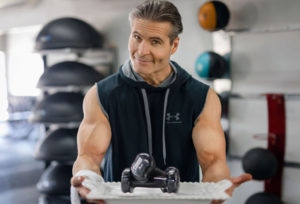
Fat Loss Compounds: Exploring Their Mechanisms, Pathways, and the Latest Research
Fat loss remains one of the most sought-after goals in the world of health and fitness. With countless supplements available in the market, it’s important to understand which compounds are truly effective and how they contribute to fat loss. Below, we’ll explore the mechanisms, pathways, and research behind 15 popular fat loss compounds, helping you make informed decisions when it comes to your weight loss journey.
While there is no single “magic pill” for weight loss, numerous fat burners have been shown through recent scientific research to support fat loss by targeting different biological mechanisms, such as appetite suppression, blood sugar regulation, increased lipolysis, hormone regulation and gut bacteria. The supplements discussed here—caffeine, green tea extract, Garcinia Cambogia, glucomannan, chromium, forskolin, 5-HTP, and L-carnitine— etc. have all demonstrated effectiveness in modern studies.
As always, check with your doctor before taking any supplements as they are not regulated by the FDA or other medical association. A good personal trainer is a great option to help guide through the weight loss and fat burning process utilizing exercise and diet combined with the most effective supplementation.
1. Caffeine: The Thermogenic Stimulant
How It Works:
Caffeine is a natural stimulant that primarily works by increasing the release of catecholamines (such as norepinephrine and epinephrine), which can increase fat oxidation. It enhances thermogenesis — the process of heat production in the body — and increases metabolism.
Pathway for Fat Loss:
Caffeine works through the adrenergic pathway, stimulating beta-adrenergic receptors, which accelerates fat breakdown (lipolysis).
Research:
Studies consistently show that caffeine can increase fat oxidation. A study published in the American Journal of Clinical Nutrition demonstrated that caffeine consumption led to increased fat burning, particularly during exercise.
-
Best Time to Take: Take caffeine in the morning or before a workout to boost metabolism and performance.
-
With or Without Food: It can be taken with or without food, though it may cause digestive discomfort when taken on an empty stomach for some people.
2. Green Tea Extract (EGCG): A Multi-Pronged Approach to Fat Loss
How It Works:
Green tea extract, specifically the compound epigallocatechin gallate (EGCG), is a powerful antioxidant that helps in fat burning by increasing the rate of fat oxidation. It inhibits the enzyme that breaks down norepinephrine, thus prolonging its fat-burning effects.
Pathway for Fat Loss:
EGCG works by inhibiting catechol-O-methyltransferase (COMT), which results in increased levels of norepinephrine, stimulating fat breakdown.
Research:
Recent studies show that green tea extract can lead to a significant reduction in body fat. A study published in the International Journal of Obesity in 2020 found that EGCG increased fat oxidation, especially during exercise.
-
Best Time to Take: Ideally taken in the morning or before meals.
-
With or Without Food: Can be taken with food to avoid digestive upset.
3. Garcinia Cambogia: Appetite Suppression and Fat Blocker
How It Works:
Garcinia Cambogia contains hydroxycitric acid (HCA), which is believed to inhibit the enzyme citrate lyase, which plays a role in fat storage. HCA may also increase serotonin levels, leading to reduced appetite.
Pathway for Fat Loss:
HCA blocks fat synthesis by inhibiting citrate lyase, which reduces the conversion of carbohydrates into fat.
Research:
Studies show mixed results, but one 2011 meta-analysis concluded that Garcinia Cambogia has a modest effect on weight loss. More recent studies have found it useful for reducing belly fat in some individuals.
-
Best Time to Take: Take 30-60 minutes before meals.
-
With or Without Food: Take with food for better absorption and to avoid digestive discomfort.
4. Konjac Root (Glucomannan): Appetite Suppressant and Gut Health Aid
How It Works:
Glucomannan is a soluble fiber derived from the root of the Konjac plant. It expands in the stomach, promoting feelings of fullness and reducing hunger.
Pathway for Fat Loss:
The fiber absorbs water and creates a gel-like substance in the stomach, which reduces appetite and slows down digestion, helping to reduce overall calorie intake.
Research:
A 2015 review in Obesity Reviews confirmed that Glucomannan can support weight loss by promoting satiety and reducing overall calorie intake.
-
Best Time to Take: Take 30 minutes before meals.
-
With or Without Food: Should be taken with a large glass of water before meals.
5. Chromium: Blood Sugar Regulation and Insulin Sensitivity
How It Works:
Chromium enhances the action of insulin, improving blood sugar control. By stabilizing blood sugar levels, it reduces cravings, particularly for sugary foods.
Pathway for Fat Loss:
Chromium works by increasing insulin sensitivity, which can lead to better nutrient partitioning, where the body burns fat for energy instead of storing it.
Research:
A study in the Journal of Clinical Nutrition (2006) found that chromium supplementation could reduce body fat and improve insulin sensitivity.
-
Best Time to Take: Take with meals to help stabilize blood sugar.
-
With or Without Food: Best taken with food to enhance its effectiveness.
6. Forskolin: Lipolysis Activation and Increased Fat Burning
How It Works:
Forskolin, derived from the Coleus forskohlii plant, activates the enzyme adenylyl cyclase, which increases levels of cyclic AMP (cAMP). This enhances lipolysis — the breakdown of stored fat.
Pathway for Fat Loss:
Forskolin increases cAMP levels, which activates protein kinase A (PKA), leading to enhanced fat burning and thermogenesis.
Research:
Studies suggest Forskolin may help in reducing body fat, particularly in overweight and obese individuals. A 2005 study published in Obesity Research showed that forskolin significantly reduced body fat in men.
-
Best Time to Take: Take in the morning to boost metabolism.
-
With or Without Food: Can be taken with or without food.
7. Coleus Forskohlii: Cortisol Suppression and Fat Loss
How It Works:
Coleus forskohlii contains Forskolin, which has been shown to reduce cortisol levels — a hormone associated with fat storage, particularly in the abdominal area.
Pathway for Fat Loss:
By reducing cortisol, Forskolin helps prevent the breakdown of lean muscle tissue and encourages fat loss.
Research:
A 2007 study in the Journal of Obesity found that Coleus forskohlii could help reduce body fat by promoting fat oxidation and lean muscle mass preservation.
-
Best Time to Take: Morning or before exercise.
-
With or Without Food: Can be taken with or without food.
8. 5-HTP: Ghrelin Regulation and Appetite Suppression
How It Works:
5-Hydroxytryptophan (5-HTP) is a precursor to serotonin. It increases serotonin levels, which can reduce appetite, particularly cravings for carbohydrates.
Pathway for Fat Loss:
5-HTP works by increasing serotonin levels, which affects appetite-regulating hormones like ghrelin and leptin, leading to reduced hunger and food intake.
Research:
A 2009 study in Current Therapeutic Research suggested 5-HTP supplementation led to significant reductions in food intake and body weight.
-
Best Time to Take: Best taken in the evening before meals to reduce evening cravings.
-
With or Without Food: Should be taken with food to reduce the chance of gastrointestinal side effects.
9. L-Carnitine: Fat Transport and Lipolysis Enhancement
How It Works:
L-Carnitine helps transport fatty acids into the mitochondria, where they are burned for energy. This increases fat oxidation, particularly during exercise.
Pathway for Fat Loss:
L-Carnitine enhances fatty acid transport into the mitochondria, thus improving fat burning during aerobic activities.
Research:
Studies in the American Journal of Clinical Nutrition have shown that L-carnitine supplementation may help improve fat metabolism and enhance exercise performance, particularly in endurance sports.
-
Best Time to Take: Take 30 minutes before exercise for optimal fat oxidation.
-
With or Without Food: Best taken on an empty stomach to improve fat oxidation.
10. Taurine: Metabolic Regulator
How It Works:
Taurine is an amino acid that plays a role in regulating blood sugar, enhancing insulin sensitivity, and boosting fat metabolism.
Pathway for Fat Loss:
Taurine affects the AMP-activated protein kinase (AMPK) pathway, which regulates energy balance, promoting fat burning.
Research:
A 2015 study in Molecular Nutrition & Food Research suggested that taurine supplementation could support fat loss by improving insulin sensitivity and energy metabolism.
-
Best Time to Take: Take in the morning or pre-workout.
-
With or Without Food: Can be taken with or without food.
11. TMG or Trimethylglycine: Fat Burner
How It Works:
TMG supports methylation, which plays a role in fat metabolism. It helps in the processing of fats in the liver, supporting fat-burning pathways.
Pathway for Fat Loss:
TMG affects the methylation cycle, which aids in fat breakdown and supports the detoxification process.
Research:
A study in the Journal of Clinical Endocrinology and Metabolism showed that TMG supplementation can help in fat metabolism and weight management.
-
Best Time to Take: Take with meals to enhance fat metabolism.
-
With or Without Food: Best taken with food.
12. NMN as a Fat Burner
How It Works:
Nicotinamide Mononucleotide (NMN) is a precursor to NAD+, a molecule that plays a vital role in energy metabolism and fat burning by promoting mitochondrial function.
Pathway for Fat Loss:
NMN enhances NAD+ levels, which improves mitochondrial activity and boosts fat metabolism.
Research:
Recent studies, such as one in Cell Metabolism (2020), suggest NMN can help reduce fat mass by increasing mitochondrial function and energy expenditure.
-
Best Time to Take: Morning or before workouts.
-
With or Without Food: Can be taken with or without food.
13. Probiotics and Firmicutes Bacteria
How It Works:
Certain strains of probiotics, such as those that increase Firmicutes bacteria, can influence gut health and fat metabolism. These bacteria help digest fiber, leading to the production of short-chain fatty acids (SCFAs), which are linked to fat burning. Acetate, Propionate and Butyrate, are produced by gut bacteria from fermented foods, and have beneficial effects. Butyrate is often highlighted for its potential to promote fat burning and overall health.
Pathway for Fat Loss:
Probiotics help in regulating gut microbiota, leading to improved metabolic efficiency and fat oxidation.
Research:
A study in The ISME Journal (2020) showed that altering gut bacteria composition through probiotics can influence body fat composition and weight loss.
-
Best Time to Take: Take with meals.
-
With or Without Food: Best taken with food to support gut health.
14. CLA or Conjugated Linoleic Acid
How It Works:
CLA is a fatty acid found in meat and dairy that is believed to reduce fat storage and increase fat oxidation.
Pathway for Fat Loss:
CLA works by influencing lipolysis and fat oxidation, helping to reduce body fat and increase lean mass.
Research:
Studies have shown that CLA can reduce body fat in overweight individuals. A 2015 meta-analysis published in Obesity Reviews concluded CLA helps with fat loss, though effects are moderate.
-
Best Time to Take: Take with meals to improve fat metabolism.
-
With or Without Food: Best taken with food for better absorption.
15. Berberine
How It Works:
Berberine is an alkaloid that supports weight loss by improving insulin sensitivity and regulating blood sugar levels. It activates the AMPK pathway, which promotes fat burning.
Pathway for Fat Loss:
Berberine activates AMPK, enhancing fat oxidation and improving glucose metabolism.
Research:
A study in Metabolism (2015) found that berberine supplementation significantly reduced body weight and improved metabolic health in obese individuals.
-
Best Time to Take: Take with meals for better blood sugar regulation.
-
With or Without Food: Best taken with food to reduce potential stomach discomfort.
Conclusion
As always, it’s crucial to combine these supplements with a balanced diet, regular exercise, and a healthy lifestyle. Moreover, before starting any supplementation regimen, it’s important to consult with a healthcare professional, particularly if you have any underlying medical conditions or are taking medications.
Optimize Your body with Personal Training:
Are you feeling weak, tired and just not yourself? Are watching your health & Fitness slip away? Maybe it’s time to enhance your Strength, Agility, Stability & Flexibility through exercises. Contact us today to schedule a consultation with John Turk, San Diego’s top personal trainer for aging professionals wanting to get their body back. Whatever your fitness goals are, we’ll create a customized plan that works for you.
Call 858-877-1370
Visit us at www.PersonalTrainerSanDiego.com to Get Started
















